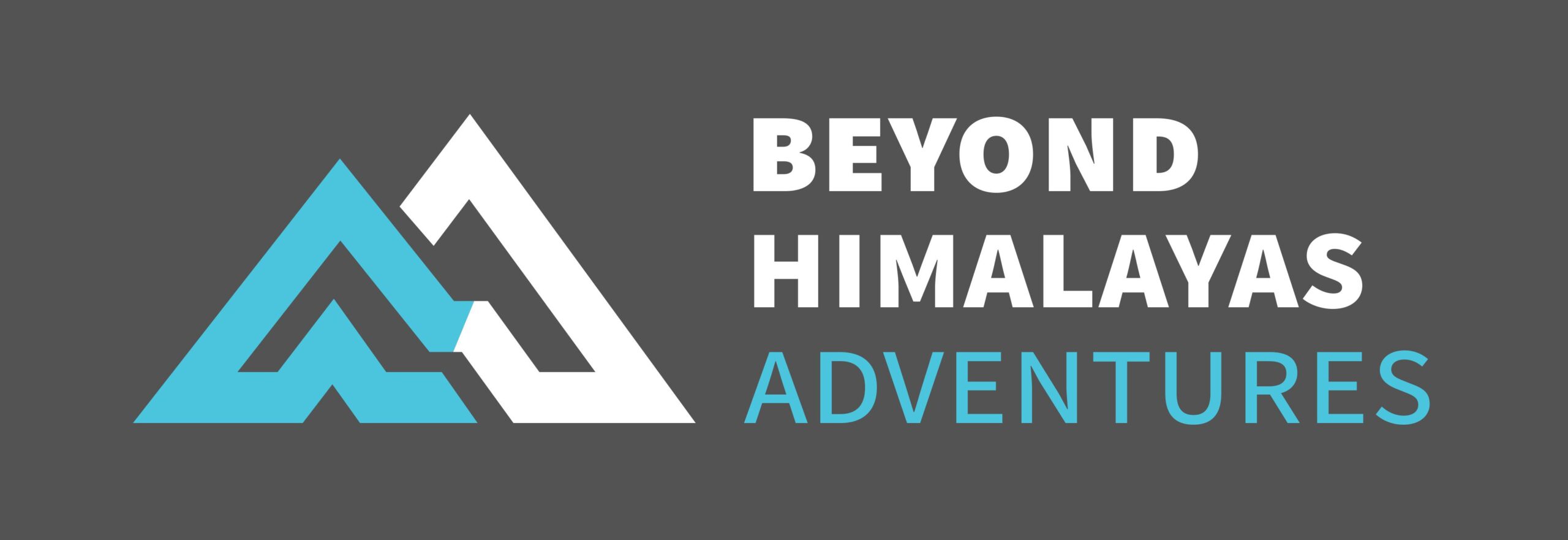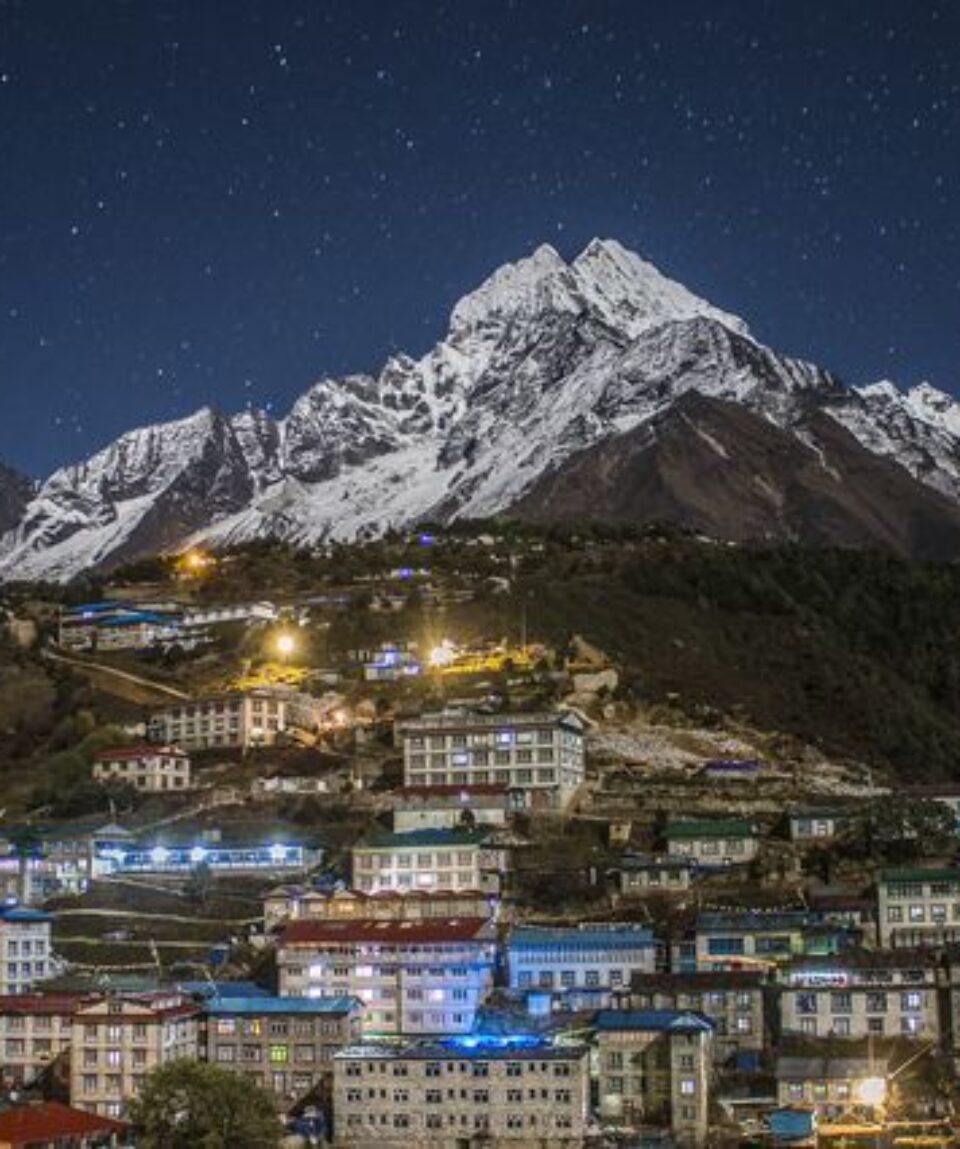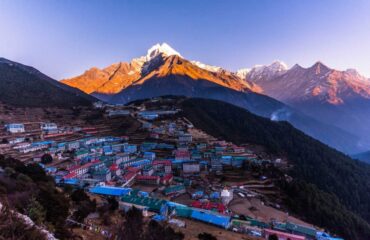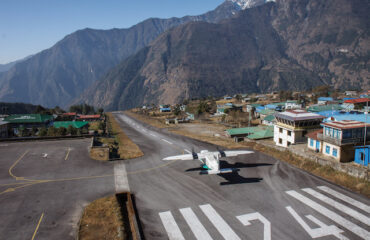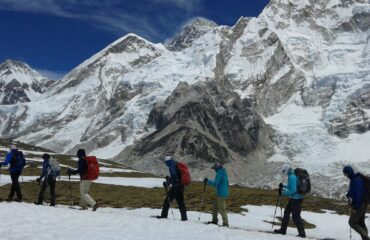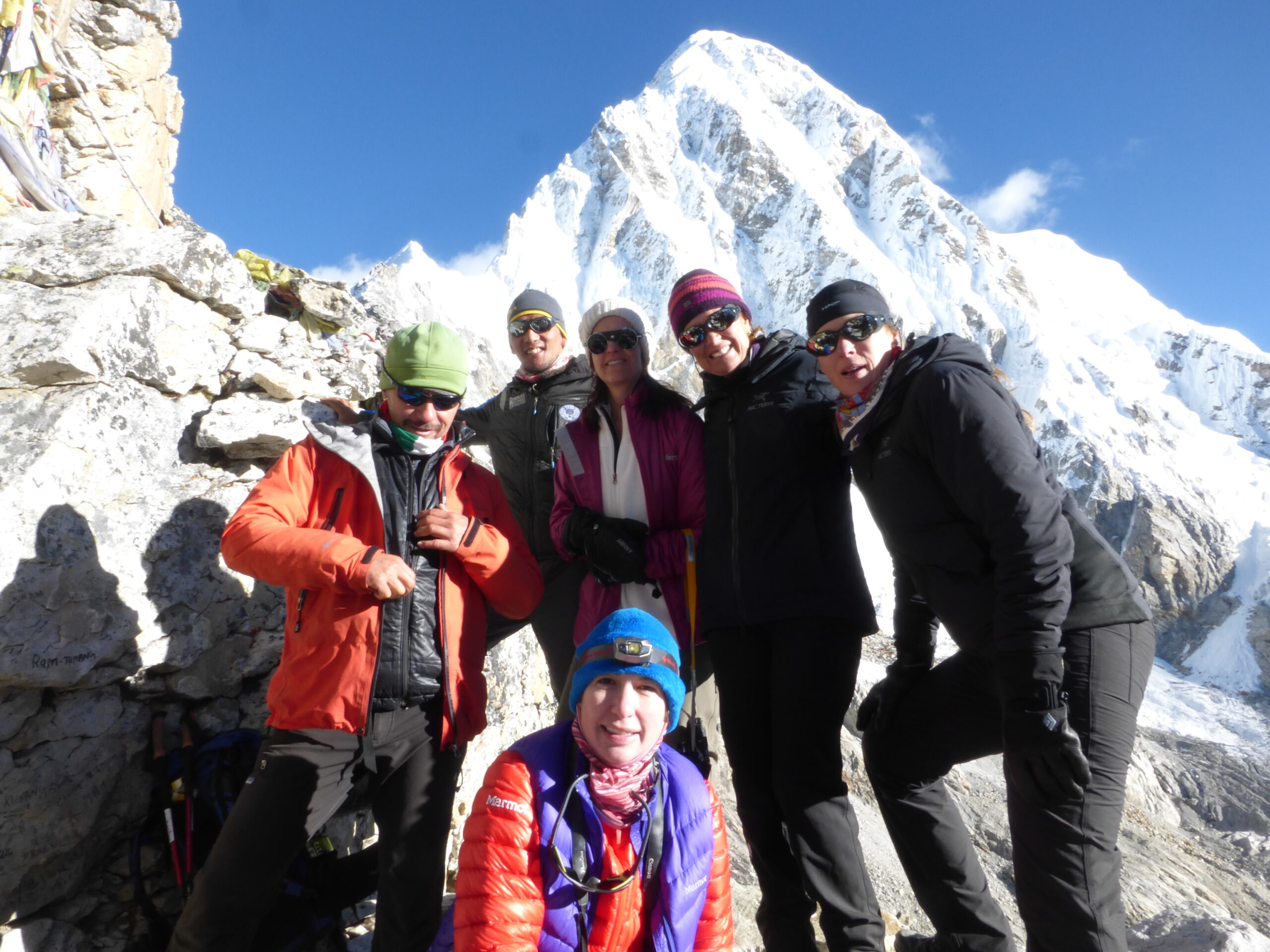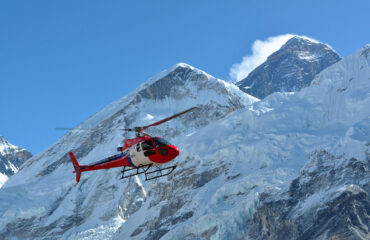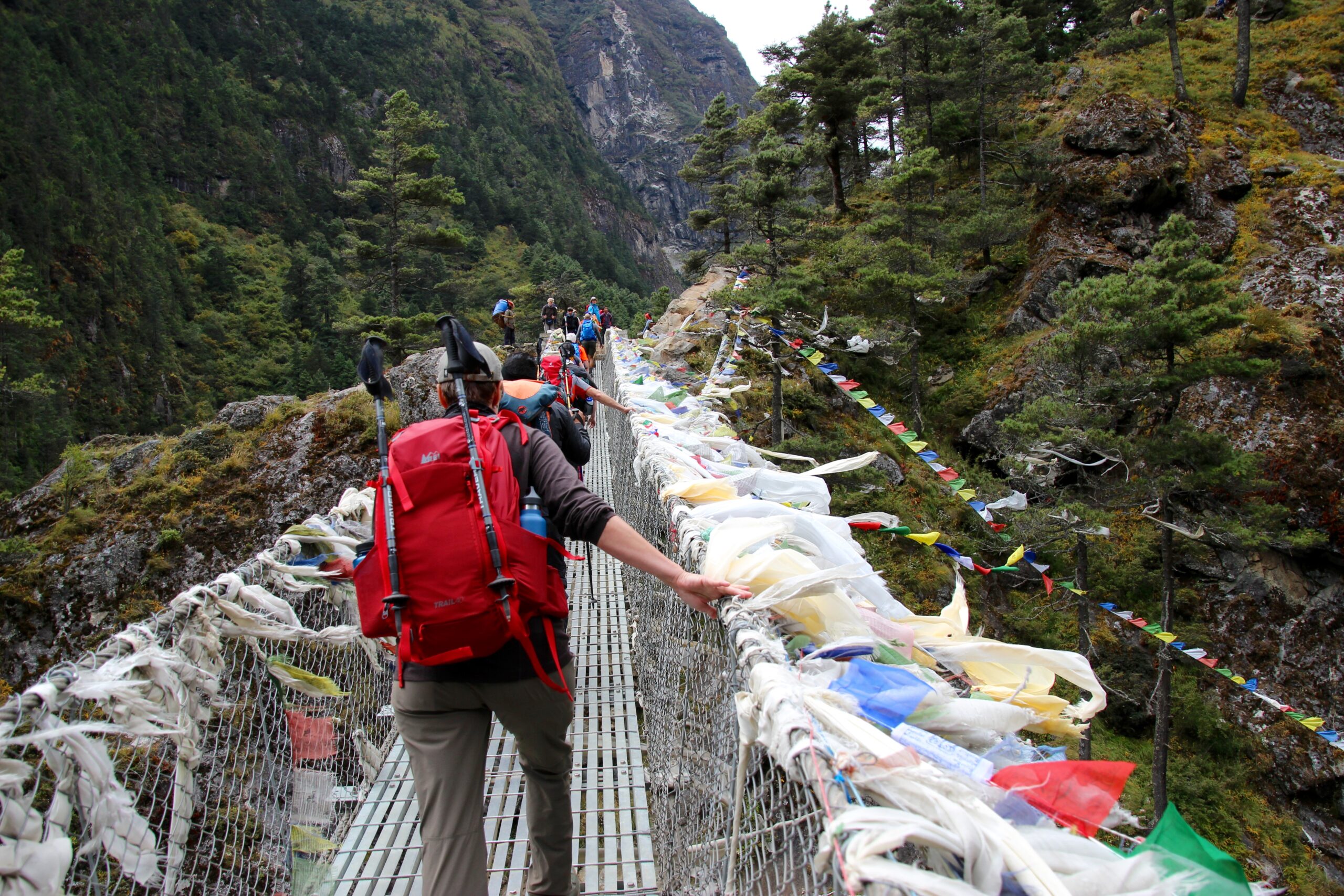Everest Luxury Trek
fromTrek to Everest Base Camp in the comfort of luxury lodges and the finest teahouses to have the most pleasant experience and fly back to Kathmandu on a helicopter.
-
Reviews 0 Reviews0/5
-
Vacation Style Holiday Type
-
Hiking
-
-
Activity Level Strenuous
-
Group Size Medium Group
Everest Luxury Trek is the best way to explore Nepal in style while staying in comfortable lodges, high-quality cuisine, and warm Sherpa hospitality of the Everest region. The trekking trail between luxurious lodges of the Everest region takes you through beautiful Sherpa villages with spectacular views of the Khumbu and the Everest region. As the period goes by, the interest of travelers have increased from simple BUDGET TOUR to LUXURIOUS TRAVEL, therefore, we are offering this trip
The main feature of the luxury lodge trek in Everest is the opportunity to stay at the finest local luxury lodges and & flying out via helicopter to end this trip for a truly memorable experience of a lifetime.
Our knowledgeable and personable e guide will show you the hidden secrets of the Everest region and lead the local crew to make this a truly memorable experience of a lifetime. While the trek to Everest Base Camp is a physical undertaking that takes some effort, this option enables you to experience this fantastic journey in comparative luxury.
Adventure Sherpa Tracks has created this trip to meet and exceed customer satisfaction in luxury, quality and experience.
Trip Highlights
- A glimpse into the life of the “mountain people” living in the heart of the Himalayas
- Experience Everest in style
- Sherpa people, culture, and their hospitality
- Stay at 5-star hotel and luxury lodges on the trek
- Fly back to Kathmandu on a helicopter
- Airport transfers and escort.
- All meals while on the trek. (breakfast, lunch, and dinner)
- Accommodation during the trek at the local lodge.
- Domestic airfares Kathmandu-Lukla-Kathmandu
- Heli: Labuche-Kathmandu
- English speaking government-licensed guide (4 trekkers=1 assistant guide)
- Porter Service (2 Trekker =1 porter)
- Staff cost including their (Wages, food, insurance, and accommodation)
- All national park local municipality entry fees.
- 3 nights accommodation at 5-star category hotel in Kathmandu on twin sharing basis with breakfast.
- All guided sightseeing tours in Kathmandu and entry fees.
- All ground transportation on comfortable private vehicle
- All government and local taxes
- International airfares
- International Airport Departure Tax and visa entry fees
- Trekking and personal equipment
- Major meals, Lunch, and dinner during your stay in Kathmandu
- Any type of personal expenses, such as alcoholic beverages
- Rescue & travel insurance, trip cancellation costs, accident or health emergency, evacuation, loss, theft or damage to baggage, and personal effects.
- Tips & Gratuities to porters and guides
- We strongly advise you to take out personal travel insurance.
- Day 1 Depart Home Country
- Day 2 En Route (Transit)
- Day 3 Arrival in Kathmandu (1,300m/4,264ft) and transfer to hotel
- Day 4 Kathmandu: Sightseeing and Trek Preparation (1,350m/4,429ft)
- Day 5 Fly to Lukla and trek to Phakding 2,800m/9,187ft) 3-4 hrs
- Day 6 Trek to Namche Bazar [3,450m/11,319ft] 5-6 hrs
- Day 7 Acclamatization day and excursion around Namche
- Day 8 Namche Bazzar to Deboche (3,820m/12,533ft) 5-6 hrs
- Day 9 Trek to Dingboche (4,360 m/14,300 ft): 5 – 6 hrs
- Day 10 Acclimatization day –rest day at Dingboche
- Day 11 Dingboche to Lobuche (4940 m/16,207 ft) 4-6 hrs
- Day 12 Lobuche to Gorak Shep, visit Everest Base Camp (5,364m/17,599ft) 6-7 hrs
- Day 13 Visit Kalapatthar (5545m) and Back to Lobuche – 5 Hrs Trek – Fly Back to Kathmandu
- Day 14 Free day in Kathmandu
- Day 15 Transfer to airport for international departure
- Day 16 En Route Home Country
- Day 17 Arrive Home country
The main emphasis while trekking is on keeping warm and dry while still being lightweight. You should bring a rucksack or backpack for the gear required during the day. Your pack should contain items such as warm clothes, a jacket, a camera, water bottles, a personal first aid kit, and snacks. The weight limit is 5kg. A porter will carry the rest of your personal equipment packed in a duffel or kit bag. The weight limit for your duffel bag is 15 kg however it is different in the case of peak climbing and expedition.
A Note on Packing
For your international flights, we recommend that you pack all your equipment in your two duffle bags or suitcase. Do not simply pack your backpack (since the straps can be damaged by the baggage handling machines). It is important to lock these bags for their trip. Depending on the airport, you may be able to put your travel locks on after TSA has searched the bags. If not, Lock the bags with Zip Ties. If the TSA cuts off the zip-tie to search your bag, they will replace it. You will still need the travel locks to lock your bags in the hotel and during the trek. Generally, you will take one duffel on the trek , and leave one in the hotel in Kathmandu with your belongings for your time in the city. Your trek in duffel will only be accessible in the evenings (with items such as changes of clothing, sleeping bag), and your day pack will hold vitals such as water, layering, blister kit, and camera.
Headwear
- Sun Hat/Normal cap
- Fleece or woollen hat
- Earmuffs/Ear warmers (optional)
- Sunglasses with UV protection
- Buff Scarf / thin face mask
Handwear
- Fleece or woollen thin gloves
- Gore-Tex mitten gloves
Bodywear
- Gore-Tex Jacket
- Gore-Tex Pant
- Hiking pant
- Fleece trouser and jacket or warm jumper – Recommended not thick but warm enough that fits inside the Gore-Tex pant
- Anti-sweat T-shirt
- Thermal inner trouser
- Down jacket with hoodie
Footwear
- Trekking boots
- Hollow Out Outdoor Slipper
- Trekking socks (4-5 pair)
Other equipment
- Lightweight Sleeping bag (comfort rated – 15 ºC)
- 25-30 Liter Rucksack with cover
- Medium size Duffel Bag with padlock
- Headlamp with spare batteries
- Water bottles 1 Liter
- Thermos
- Basic First Aid Kit including antiseptic cream, throat lozenges, diarrhoea treatment (Imodium), altitude (Diamox), painkillers, plasters and blister treatment, insect repellent, and re-hydration salts (Dioralite). Glucose tablets and multi-vitamin tablets are also a good idea.
Washing Kit & Toiletries
- Waterproof washing kit bag
- Towel – medium size
- Washing soap, towel, tooth pest, toothbrush etc.
- Sun Lotion Enough +30SPF (including total bloc for lips, nose etc.)
- Handwash & sanitizer
- Toilet paper (you can buy this in the lodges)
- Wet tissues
Optional items
- Trekking poles
- Trainers or similar for use in the lodges
- Shorts
- Baselayer leggings
- Gaiters
- Sleeping bag liner
- Pillowcase
- Earplugs (particularly if you are not the one snoring)
- Camera
- Pen-knife (remember to pack sharp objects in hold baggage)
- Repair kit – (e.g. needle, thread, duct tape)
Conclusion:
As the weather condition is unpredictable in the Himalayan region, you need to be prepared at all times. A day can start sunny with clear skies and later become cold and windy at the high altitudes.
Sometimes, it can rain and snow during the trekking period. You need to remember that for a successful trekking journey, your physical comfort must be the first priority.
Note:
Please note that these items listed above will vary according to the season, trek duration. Please remember that your luggage will be carried by the porter, but you need to carry a daypack on your own. We also suggest you pack only necessary items to keep the weight of your equipment to a minimum.
The best time for the Everest Luxury Trek is in the pre-monsoon season, i.e., from March to May, and the post-monsoon season, i.e., from late September to December. It is also possible to do this trek in February and early September but the trek is best preferred during the above months.
Everest Luxury Trek is considered challenging due to high altitudes. The trail is relatively easier following good paths and yak trails but due to the increasing altitude, it’s graded challenging. The trek reaches a maximum elevation of 5545m/18,193ft at Kalapathar with a maximum overnight elevation of 5140m/16,865ft at Gorekshep.
Please be prepared to walk for 6-7 hrs every day on average carrying your backpack, which will consist of your valuable items, water, extra fleece, snacks, etc. The trek is challenging and it is a longer trek reaching up to an elevation of 5500m where some of the famous mountaineering Base Camps are located and you need to sleep at an elevation of 5000m+ for 1 night at Gorekshep
Everest Base Camp Trek is a premier trek that most ardent backpackers, hikers, and lovers of wild places aspire to. The trek is graded challenging and training yourself well ahead will definitely improve your performance during the trek. Answering this question can be a challenge because everyone is starting from a different base of fitness, age, lifestyle, and diet (what you eat on a daily basis).
Always consult with your doctor first to establish if you are healthy enough for the challenges of all-day trekking at high elevation for over a week. Once cleared for takeoff, so to speak, consulting with a qualified trainer, and a nutritionist may also prove beneficial, though many do not.
